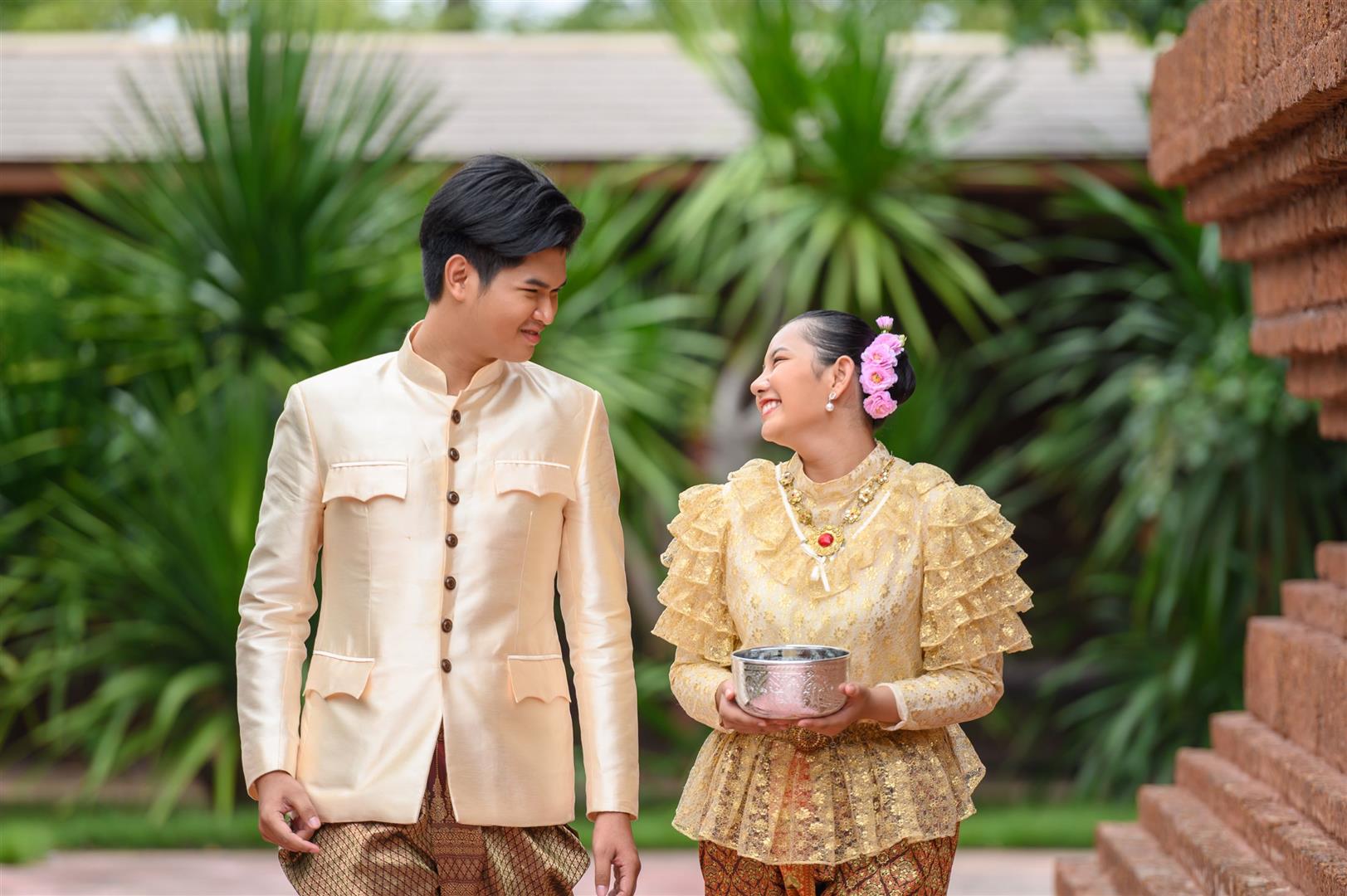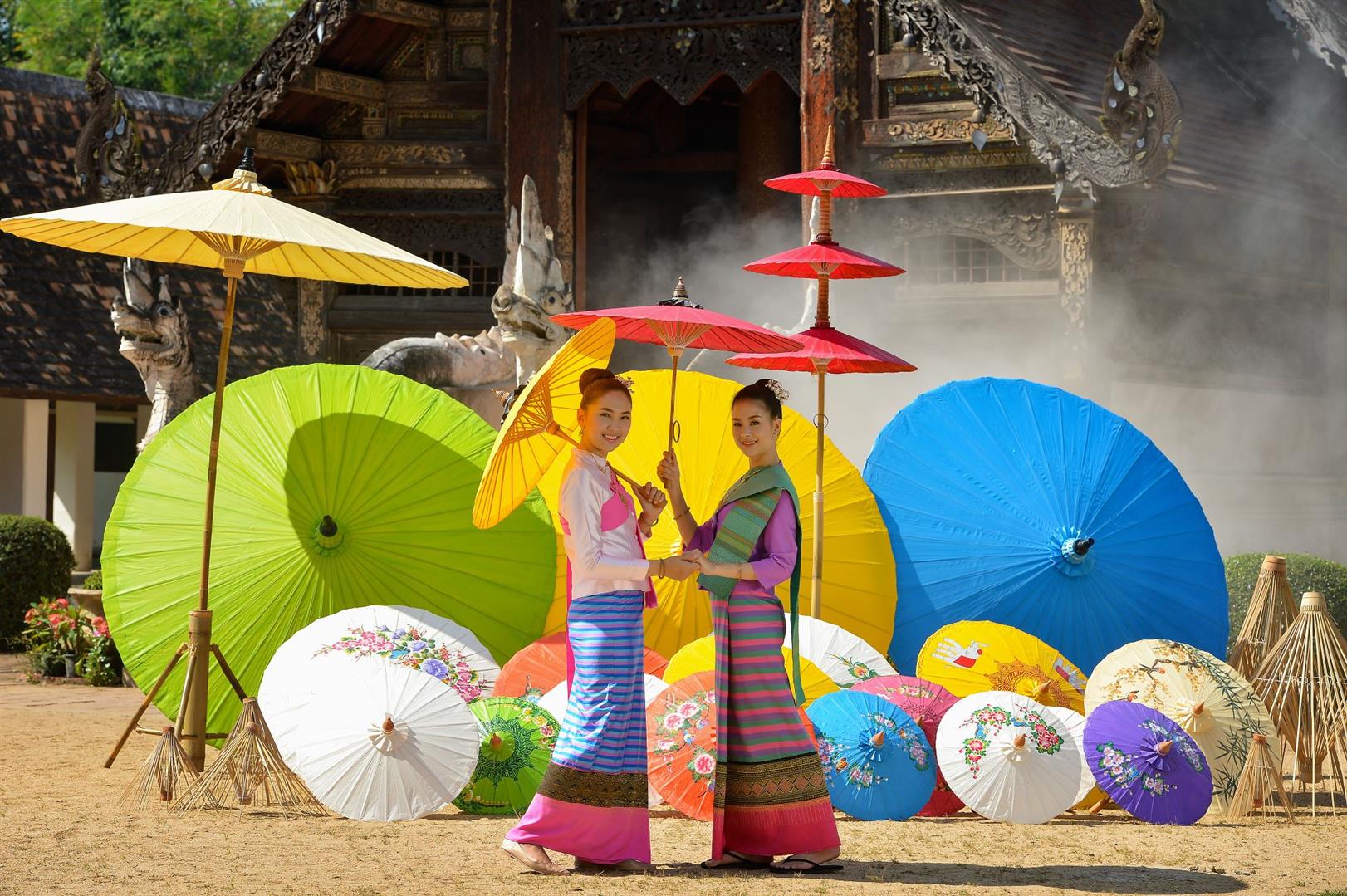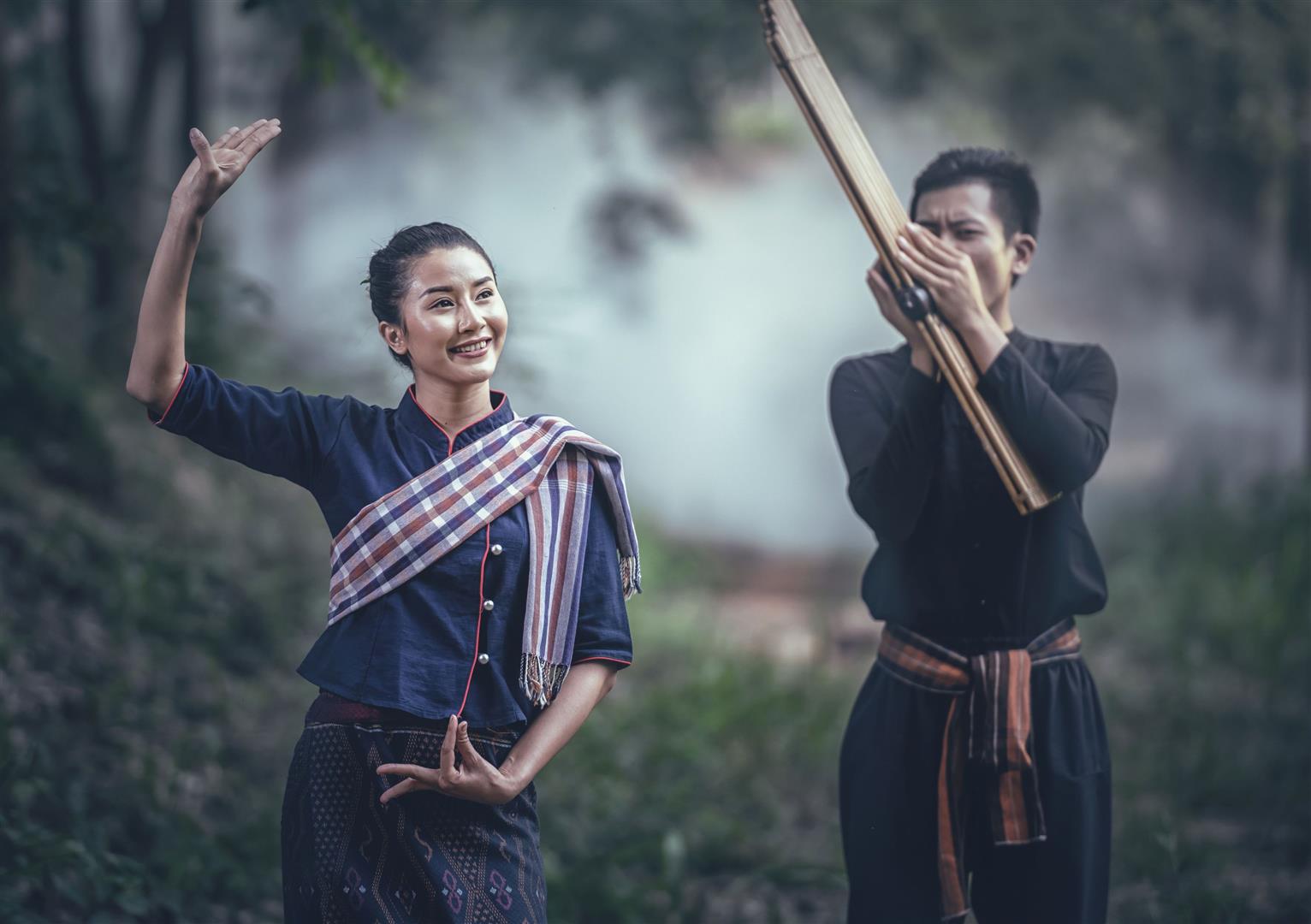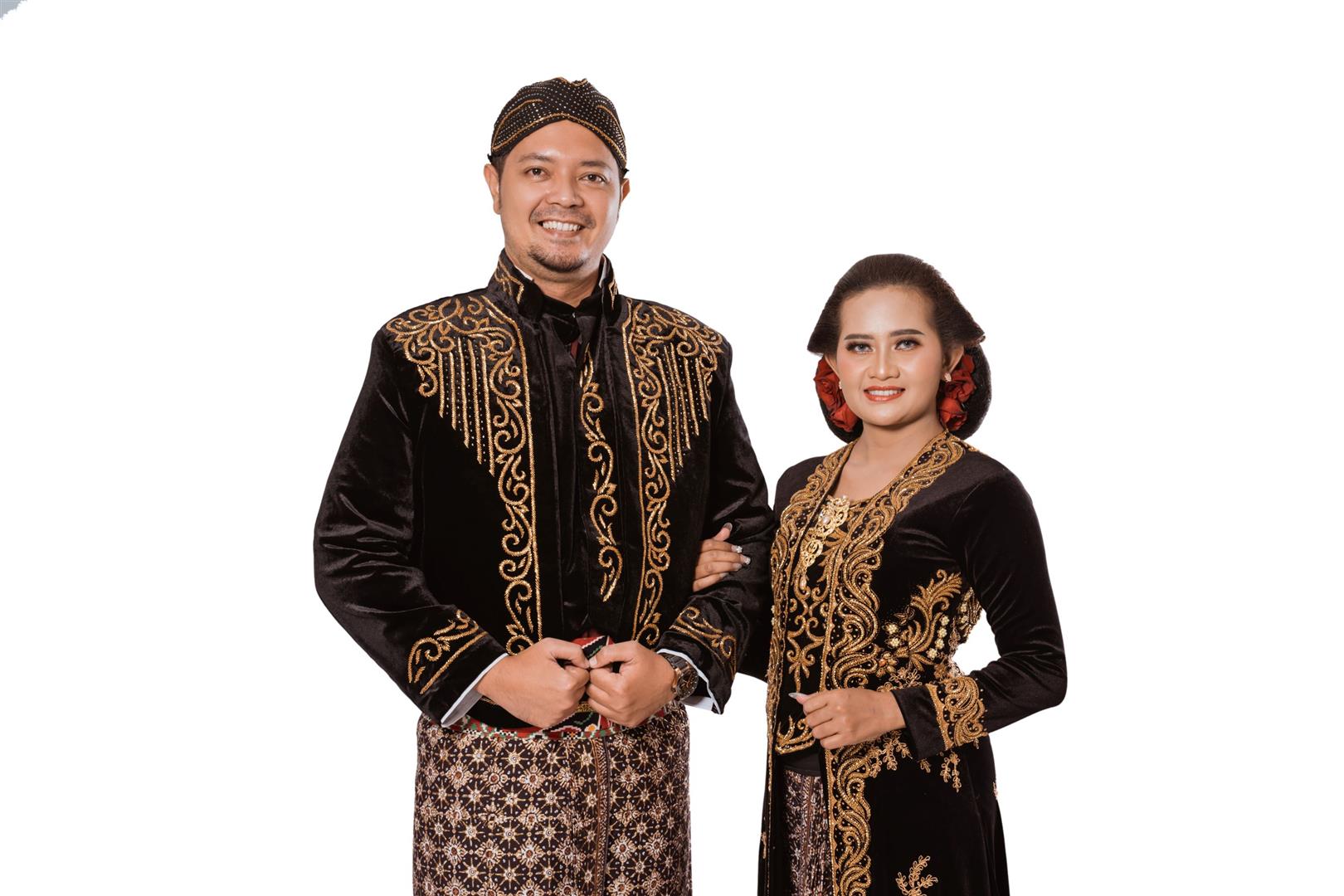
Thailand consists of four different regions: the North, the Northeast, the central region, and the South. But with geography and climate that are different in each region, the culture of traditional dress of each group has its own identity.
North:

The traditional dress of the North is characterized by the ethnicity of the urban people, which is due to the diversity of the people of each locality. Northern women will wear a Lanna sarong, or the blouse will be a colorful round-necked blouse with beautiful patterns. It is popular for men to wear long trousers, and the shirt is a round-necked, short-sleeved, blue cotton shirt, also known as a morhom.
Central region:

In the past, the central region, which even then was the place where the capital was located, had a culture of dressing beautifully, simply called “Thai dress.” Men in the old days used to wear a loincloth and a white shirt with five buttons, called ratchaprataen. As for the women, they wore a patterned loincloth, a chest-slit blouse with long sleeves, and a pleated silk blanket. The sabai would be draped over another layer of clothing, and they also wore accessories.
Isaan (Northeast):

Most clothes use hand-woven fabrics made from natural fibers, such as cotton and silk. Isaan people regard weaving as a pastime. Most men wear short-sleeved shirts in dark colors and wear pants to the knees. They prefer to wear a loincloth as a sash around their waists. Most of the women prefer to wear woven sarongs that cover the body, along with colorful open-necked blouses.
South:

Due to the fact that the southern region is located close to the equatorial region, the weather is hot, so southerners prefer to dress in simple, loose clothing, mostly in cotton. Most clothing styles are similar to those of Malaysia and Indonesia because of the similarity in their weather. The famous local fabrics of the south are tie-dyed cloth, brocade, chuantani cloth, Phum Rieng silk, and batik.
Source : The Office of Arts and Chandrakasem Rajabhat University